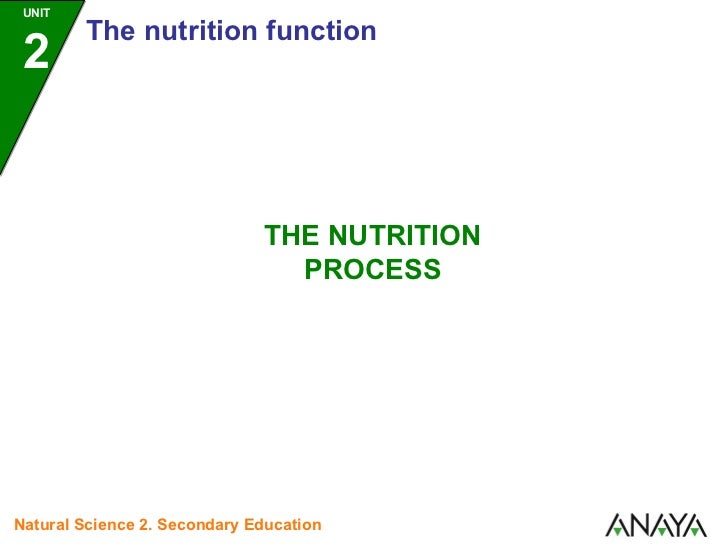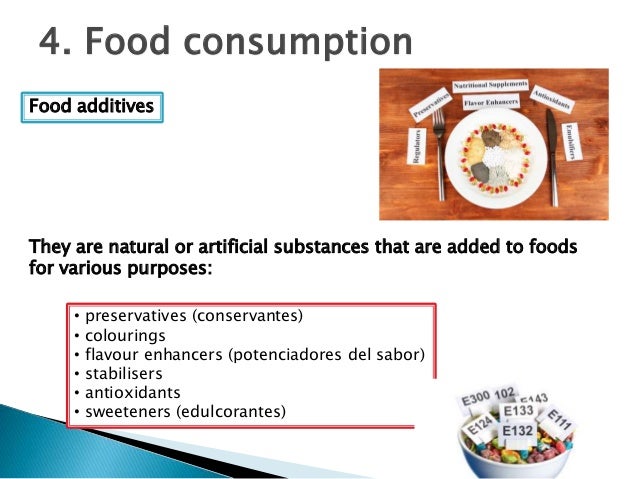Unit 2 Worksheets/Reviews and Practice Quizzes: Introductory Nutrition QUIZ: nutritionunitintroquiz.docx: File Size: 18 kb: File Type: docx: Download File. Unit 2 test nutrition Nutrition test ID: 1437034 Language: English School subject: Natural Science Grade/level: 6 grade Age: 12-13 Main content: Nutrition Other contents: Add to my workbooks (0) Download file pdf Embed in my website or blog Add to Google Classroom Add to Microsoft Teams Share through Whatsapp. UNIT 2: Nutrition Natural science (2nd ESO) 1. Nutrition function. Nutrition is the joint of processes that allows living beings obtain matter and energy from the environment, in order to perform the vital functions and to grow and to replace the damaged or lost parts of their bodies. The purpose of this unit is to develop and hone your skills in information literacy as it applies to nutrition. You’ll learn about the scientific method, because it forms the foundation of how we know what we know about nutrition. You’ll learn about the different types of research studies and each of their advantages and limitations.
February is Nutrition Month. Several activities for learning about foods and nutrition.
Objectives:
To help students learn the importance of nutrition in keeping them healthy.

Outline:
- Lesson 1: Being Healthy
- Lesson 2: Make a healthy food collage
- Lesson 3: Food Bingo
- Lesson 4: Food pyramid on the wall
- Lesson 5: Colors of food posters
- Lesson 6: How do you tell a fruit from a vegetable?
- Lesson 7: Play restaurant
LESSON 1: BEING HEALTHY
Discussion:
- What can we do to help our bodies stay healthy?(excersize, eat healthy, sleep, brush our teeth, take baths, wash our hands often)
- What kinds of food help to keep us healthy?(fruits, vegetables, meat, eggs, milk)
- Is sleep important for our bodies?
- Should we eat a lot of sweet foods and snacks? Why or why not? (cavities and they are not good for us)
- What is your favorite food to eat?? (pizza, cookies, chicken)
- What is a fruit?
- What is a vegetable?
Read any story about healthy living or healthy foods. Discuss the book.
Have posters up in the room with healthy habits on them: for instance children washing their hands, brushing their teeth and eating healthy foods.
LESSON 2: HEALTHY FOOD COLLAGE
Objective: To be able to name healthy foods.

Lesson Plan:
Have many food magazines from local grocery stores for children to cut out pictures. Try to have as many colored pictures as possible. The children also need glue, scissors and a piece of construction paper to glue it on.
Activity:
- Talk to children about healthy foods.
- Give them each some glue, scissors, and a piece of construction paper. Have them look through the brochures and magazines pictures for healthy foods they like to eat.
- Then have them cut them out and glue them onto their piece of construction paper.
- When they are all done they will be able to stand up one at a time in front of the class and tell the other students what they picked out and to point to the picture of that food item.
- Hang them up around the room for parents and other teachers to see.
LESSON 3: FOOD BINGO
Objective: To learn how to play Bingo and learn the names of many different kinds of fruits and vegetables.
Lesson Plan:
- Before the day of the lesson cut out many different kinds of fruits and vegetables out of magazine pictures and glue them onto a piece of construction paper to make a Bingo card. Make enough cards for the number of children in your class. If possible have these cards laminated so you can use them often.
- Then make up cards with names of all the fruits and vegetables you used on your Bingo cards for the caller to call out. When a child gets 3 or four in a row they call Bingo.
- You might want to have stickers as prizes or nothing at all. The kids really enjoy this and they can learn new fruits or vegetables if you put pictures of unusual fruits of vegetables such as eggplants and Kiwi.
LESSON 4: FOOD PYRAMID
Objectives: To learn about the food pyramid and the different sections of it. Also for the children to learn what foods they should have the most of to keep them healthy.
Unit 2 Nutrition Exam Quizlet
Lesson Plan:
- Have a copy of the new Food Pyramid and make the pyramid shape on a wall.
- Leave the pyramid squares all blank for the children to put in the food items. Have a piece of paper in each section that names that part of the pyramid such as breads.
- Talk to the children about what the pyramid represents and what each section is.
- Get out pictures of foods and have the children try to put the food in the correct section of the pyramid.
- After they are done, let them look at what they made and go through the whole pyramid together as a class, talking about all the examples in each section.
- Also talk about food portions and servings and how much of each serving they are to have a day.
LESSON 5: COLORS OF FOOD

Unit 2 Nutrition Worksheet Answers
Objective: To learn the different colors of foods and make a poster of the different colors to hang on the wall.
Lesson Plan:
- Have many food magazines with many pictures of different colors of food.
- Have four to five pieces of large poster board to glue the pictures onto.
- Label the posters by the color of the food that will be put on it, such as Green Foods, Red Foods, etc. (I did four posters: Red, Green, Purple and Blue)
- After the children cut out the pictures, label each item under the picture, such as Tomato, grapes etc.
- After you are all done glueing and making the posters have the children point to an item and the rest of the class tells what it is and what color it is.
The kids loved doing this and looked at the posters often in the room. The posters can be laminated after they are done so they last longer.
LESSON 6: FRUIT OR VEGETABLE?
Objective: To learn the difference between a vegetable and a fruit.
Lesson Plan:
How Do You Know a Vegetable from a Fruit???
Generally speaking, a fruit is the seed-bearing part of a plant. A vegetable is ANY part of a plant that you would eat (root, stem, leaves, fruit, seeds.)
To dig a bit deeper (no pun intended, ha ha), you can find these definitions at dictionary.com:
fruit:
- the developed ovary of a seed plant with its contents and accessory parts, as the pea pod, nut, tomato, or pineapple.
- the edible part of a plant developed from a flower, with any accessory tissues, as the peach, mulberry, or banana.
vegetable:
- any plant whose fruit, seeds, roots, tubers, bulbs, stems, leaves, or flower parts are used as food, as the tomato, bean, beet, potato, onion, asparagus, spinach, or cauliflower.
- the edible part of such a plant, as the tuber of the potato.
You may notice tomato was listed as both a vegetable AND fruit. More on that below. 😉
Bring in some real foods and determine if they are a fruit or a vegetable.
Have such examples as corn, tomatoes, green beans, pears, peaches, grapes, etc. Then have them all for a great healthy snack. Have some unusual ones much as kiwi and eggplant if you can find them at your local store.
Side note for teachers: Depending on the ability level of your students you may want to get into the more confusing fruit vs. vegetable determinations. Tomatoes, for example, are often referred to vegetables even though they are scientifically a fruit since they develop from a flower and have seeds. According to Oxford Dictionaries, “The confusion about ‘fruit’ and ‘vegetable’ arises because of the differences in usage between scientists and cooks.” In terms of cooking, a food that is more sweet will be more likely referred to as a fruit, and foods that are more spicy or salty (rather than sweet) are referred to as vegetables.
Unit 2 Nutrition
LESSON 7: RESTAURANT
Objective: To play restaurant and chose healthy foods when eating out.
Nutrition Unit Plan
Plan:
- Make menus with pictures of vegetables and dinners from magazines.
- Under each picture put the name of the item.
- Set up a kitchen area and lots of play food to use to make dinners in their restaurant. Have the students set the table with a plate cup and napkin.
- Have them take turns being the waiter, cook, and customer.
Unit 2 Nutrition Principles
The kids LOVE playing this and have so much fun.
By: Debbie Haren, preschool teacher
Lesson 6: Fruit or Vegetable, edited by Amanda (A to Z Teacher Stuff)
Unit 2 Nutrition Test
Related lesson plans:
Food And Nutrition Unit 1
- Gingerbread Baby Lesson Plans Gingerbread Baby Unit – Lessons 6-11 View lessons 1-5. Lesson 6: Gingerbread Baby Language Arts/Grammar Children will create a mobile of characters from Jan Brett’s book, Gingerbread Baby. Materials: Gingerbread Baby by Jan Brett Wire hangers String Paper Markers...
- Johnny Appleseed for Little Ones Theme Unit This is a three day theme unit featuring activities and ideas for all areas of the curriculum. It will help students become familiar with Johnny Appleseed while learning a wide variety of skills. This is particularly good for the fall....
- Thanksgiving Friends Being Thankful Lesson Why we are thankful for what we have and what makes us thankful. Materials: You need to find a class that will exchange email with you. I have found that many teachers are willing to do this. It can be...
- Day 2: Johnny Appleseed for Little Ones Theme Unit Day 2 – Introduce Johnny Appleseed LARGE GROUP ACTIVITIES Song – sung to “This Old Man” Four red apples, on the tree Two for you and two for me So-o shake that tree and watch them fall One, two, three,...
- Day 3: Johnny Appleseed for Little Ones Theme Unit Day 3 – Finish Johnny Appleseed Theme LARGE GROUP ACTIVITIES Poem: ” Ten Red Apples” with hand motions Ten red apples grow on a tree Five for you and five for me Help me shake the tree just so And...